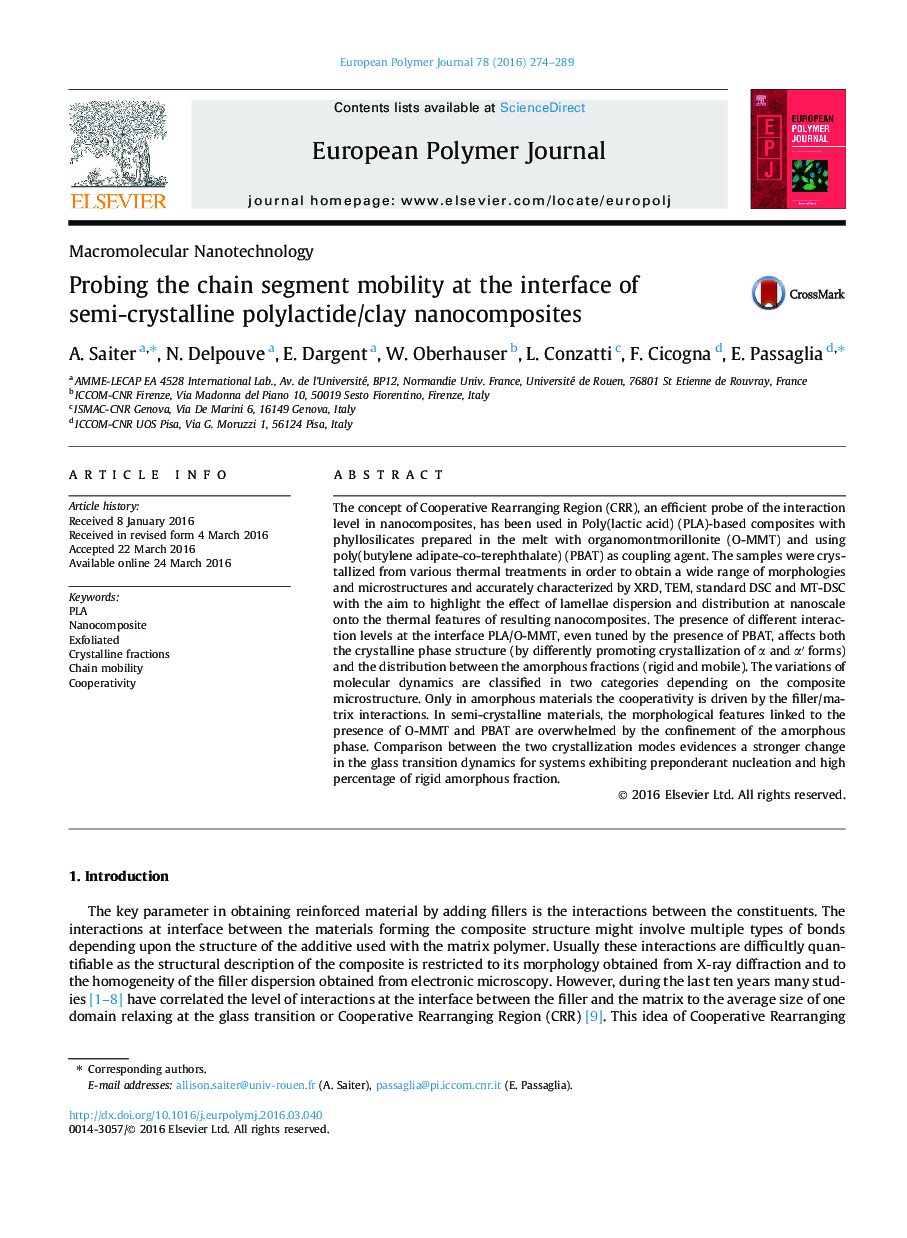| کد مقاله | کد نشریه | سال انتشار | مقاله انگلیسی | نسخه تمام متن |
|---|---|---|---|---|
| 1394645 | 1501357 | 2016 | 16 صفحه PDF | دانلود رایگان |
• Further deepening in interfacial properties of PLA nanocomposites with organo-clay.
• Role of PBAT in morphology evolution and polymer chain mobility.
• The level of interactions in the nanocomposites was probed using the CRR concept.
• Higher degree of cooperativity in exfoliated structures compared to intercalated ones.
• In semi-crystalline samples, the interaction level is independent on the morphology.
The concept of Cooperative Rearranging Region (CRR), an efficient probe of the interaction level in nanocomposites, has been used in Poly(lactic acid) (PLA)-based composites with phyllosilicates prepared in the melt with organomontmorillonite (O-MMT) and using poly(butylene adipate-co-terephthalate) (PBAT) as coupling agent. The samples were crystallized from various thermal treatments in order to obtain a wide range of morphologies and microstructures and accurately characterized by XRD, TEM, standard DSC and MT-DSC with the aim to highlight the effect of lamellae dispersion and distribution at nanoscale onto the thermal features of resulting nanocomposites. The presence of different interaction levels at the interface PLA/O-MMT, even tuned by the presence of PBAT, affects both the crystalline phase structure (by differently promoting crystallization of α and α′ forms) and the distribution between the amorphous fractions (rigid and mobile). The variations of molecular dynamics are classified in two categories depending on the composite microstructure. Only in amorphous materials the cooperativity is driven by the filler/matrix interactions. In semi-crystalline materials, the morphological features linked to the presence of O-MMT and PBAT are overwhelmed by the confinement of the amorphous phase. Comparison between the two crystallization modes evidences a stronger change in the glass transition dynamics for systems exhibiting preponderant nucleation and high percentage of rigid amorphous fraction.
Figure optionsDownload as PowerPoint slide
Journal: European Polymer Journal - Volume 78, May 2016, Pages 274–289
